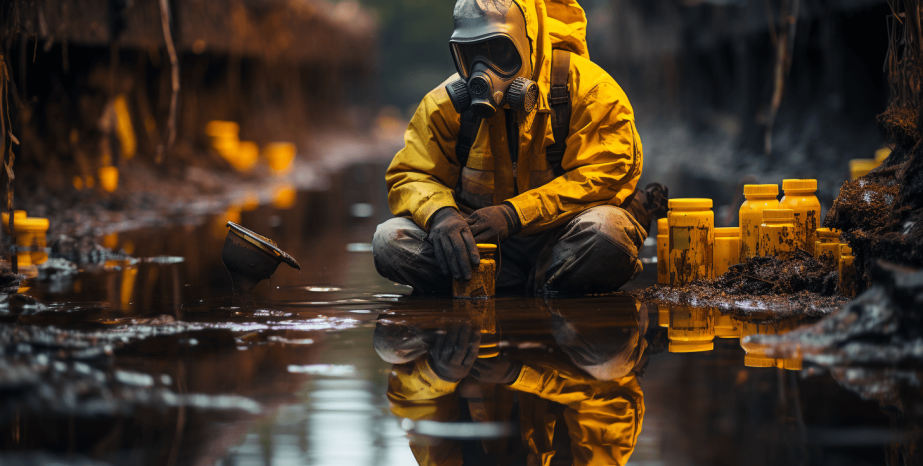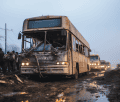
Camp Lejeune Injury Claim Window Closing
The absolute deadline to file a Camp Lejeune water contamination claim is August 10. That date sounds like a long way off. But a legal claim is not like an online pizza order. It cannot be started and submitted the same day. More on the pre-claims process below.
Additionally, another important deadline is even closer. The first trial is scheduled to begin March 10. Due to the likely tiered settlement structure, victims who file claims after that date are probably entitled to much less compensation than victims who file earlier. This deadline is also absolute. If you miss it, you miss it. More on that below as well.
So, if you think you might be eligible for a share of the estimated $21 billion settlement, we cannot urge you strongly enough to reach out to a Los Angeles personal injury lawyer immediately. You haven’t missed the train yet, but the conductor has made the “all aboard” announcement.
Claims Background
From August 1, 1953, through December 31, 1987, the tap water at Camp Lejeune was laced with extremely high levels of volatile organic compounds (VOCs), mostly industrial solvents like perchloroethylene (PCE) and trichloroethylene (TCE). The levels may have been more than 3,000 times higher than government-designated safe exposure levels.
VOCs cause various serious illnesses, such as cancer. Such illnesses usually have very long latency periods. In the 1980s, when former Camp Lejeune residents began getting sick, the Marines tested the water. These tests showed the water was contaminated. But the Marines blamed the problem on off-base dry cleaners, told no one about the test results, and did nothing about the issue.
Nevertheless, the studies continued, indicating the water was unhealthy. The final nail in the coffin came in 2007. Jerry Ensminger, a retired Marine master sergeant, uncovered a 1981 document that described a radioactive dump site near a rifle range at the camp. According to the report, the waste was laced with strontium-90, an isotope known to cause leukemia and other cancers.
Victims began filing lawsuits in 2009. But judges dismissed these lawsuits on procedural grounds. North Carolina has a ten-year statute of repose. If a construction defect causes injury, victims have ten years from completion, not ten years from discovering their illnesses, to file legal actions. The 2022 PACT Act included an override provision. That provision expires on August 10, 2024.
The Pre-Filing Process
Victims with a water contamination-related disease or their next-of-kin are eligible to file claims if they lived and/or worked at Camp Lejeune for at least thirty days between August 1, 1953 and December 31, 1987.
First, let’s break down the diseases. After much consideration, the Veterans Administration established a list of eight presumptive Camp Lejeune illnesses:
- Adult leukemia,
- Kidney cancer,
- Liver cancer,
- Multiple myeloma,
- Aplastic anemia and other myelodysplastic syndromes,
- Bladder cancer,
- Non-Hodgkin’s lymphoma, and
- Parkinson’s disease.
As a matter of law, Camp Lejeune tainted water caused a presumptive condition, if the victim meets the residency requirement. If the victim had another illness, compensation is still available. But since the presumption doesn’t apply, a Los Angeles personal injury lawyer must prove a connection between the contamination and the illness.
Frequently, these medical records are decades old. Furthermore, these paper records are probably gathering dust in a warehouse. These documents take time to acquire. That’s especially true if the victim is deceased and unable to assist with the records-location process.
Next, let’s examine the residency requirement. Technically, any connection with Camp Lejeune meets the requirement. However, the water contamination was especially pronounced in Tarawa Terrace, Midway Park, Berkeley Manor, Paradise Point, Hadnot Point, Hospital Point, Watkins Village, and Knox Trailer Park (Frenchman’s Point). Victims who lived in these areas might be entitled to additional compensation.
Unlike ZIP code areas, housing neighborhoods don’t have designated borders. This subjectivity makes proving residence in a targeted area especially difficult.
Settlement Tiers
People who sit on the 50-yard line at the Super Bowl have much better game experiences than people who buy standing-room-only tickets. Likewise, victims who invest the most in the Camp Lejeune water contamination claim will most likely get the most compensation.
According to most estimates, this compensation could be between $10,000 and $1,000,000 per person. That’s a significant discrepancy.
Tier One victims usually receive the most money. These victims quickly took the initiative and filed legal claims early when the case’s outcome was still uncertain. For practical purposes, the Tier One window probably closes in March 2024, before the first trial’s outcome.
Tier Two victims file claims only after Tier One victims and their personal injury lawyers have done the heavy lifting. Since Tier Two plaintiffs took less risk, they get less money. Tier Three victims, who file claims at the eleventh hour, get whatever’s left over, regardless of the seriousness of their injuries.
Consult Our Experienced Lawyers For More Help!
Time is expiring for Camp Lejeune victims and survivors. For a free consultation with our personal injury lawyers in Los Angeles, CA, contact the Law Offices of Eslamboly Hakim. Virtual and after-hours visits are available.









